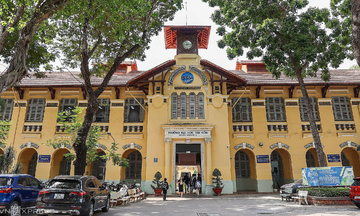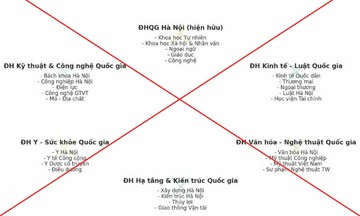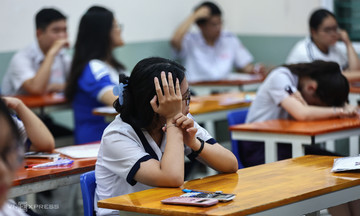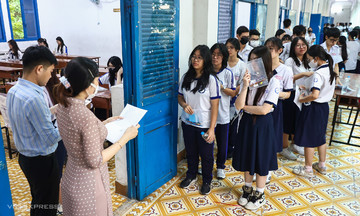The Hung Yen Department of Education and Training launched a campaign last week to address the mispronunciation and misspelling of the consonants "l" and "n." This initiative is based on a survey conducted within the province, though specific details were not provided.
The campaign aims to foster a healthy communication environment with proper reading, writing, speaking, and listening skills, thus preserving the clarity of the Vietnamese language. It also encourages students to practice self-improvement for confidence in communication, learning, and life, contributing to creative and effective teaching and learning and the overall development of students' qualities and abilities.
The Department has divided the campaign into two phases. From now until 2026, the goal is for 80% of teachers who mispronounce "l" and "n" to correct their speech. For students who mispronounce or misspell these sounds, the target is 50%. From 2027 to 2030, the aim is for all teachers to pronounce correctly, and for 80% of students to overcome their mispronunciation and misspelling.
To achieve these goals, the education sector requires schools to innovate teaching methods, testing, and assessment in language development, and in Vietnamese language and literature classes.
For example, in preschool, schools should focus on correct "l" and "n" pronunciation based on age, integrating it into activities like Speaking Practice, Storytelling, Poetry Reading, and Alphabet Introduction.
In elementary school, students need practice reading sounds, syllables, words, and sentences correctly, as well as writing common words often mispronounced due to regional dialects. The Department emphasizes dedicating more time to reading skills, comprising 60-63% of total class time for this subject. This percentage remains similar in lower and upper secondary schools.
Schools are also encouraged to integrate "l" and "n" correction into other subjects and activities. Preschools can incorporate it during recess, rhymes, poems, singing, and games, while elementary schools can include it in English, Music, and Local Education classes.
For teachers, the Department and schools will organize training on correcting "l" and "n" pronunciation and promote standard language use in schools, addressing feelings of self-consciousness or difficulty.
The Department also mandates the establishment of "I Love Vietnamese" clubs in schools with regular activities. Competitions and interactive platforms will be organized to cultivate proper reading, writing, speaking, and listening skills in Vietnamese, following the principle of "learning through play, playing through learning."
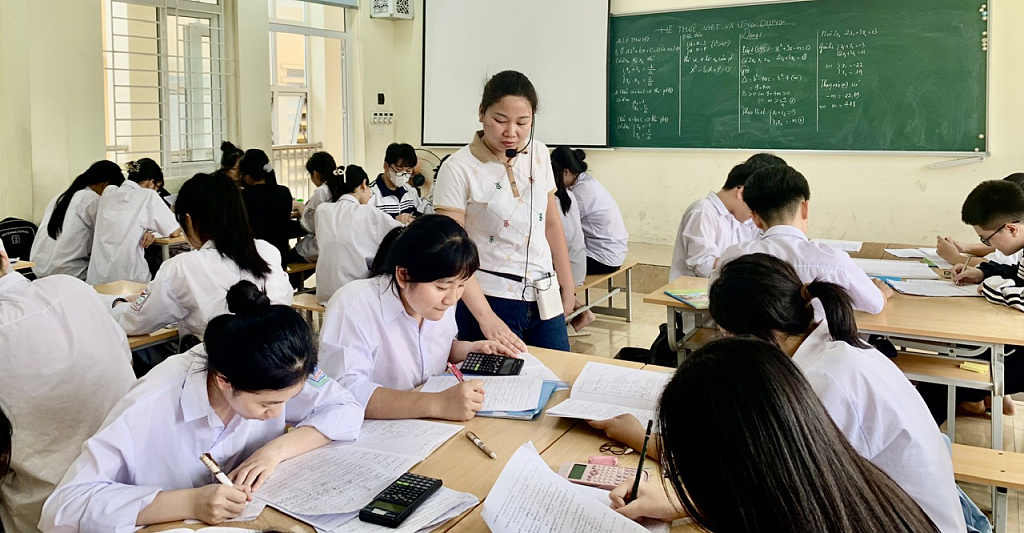 |
Students at Ban Yen Nhan Primary and Secondary School, Hung Yen, preparing for the 10th-grade entrance exam in 2024. Photo: Hung Yen Newspaper |
Students at Ban Yen Nhan Primary and Secondary School, Hung Yen, preparing for the 10th-grade entrance exam in 2024. Photo: Hung Yen Newspaper
Associate Professor Nguyen Lan Trung, former Vice Principal of the University of Languages and International Studies (Vietnam National University, Hanoi), and current President of the Vietnam Linguistics Association, praised the Hung Yen Department of Education and Training's initiative.
"This initiative demonstrates a strong commitment to preserving the clarity of the Vietnamese language," Trung said.
Trung noted that mispronunciation of "l" and "n" is common in provinces and cities in the Red River Delta, causing "discomfort due to inaccurate pronunciation."
According to Dr. Nguyen Hoang Trung Khoa, Head of the Department of Linguistics, University of Social Sciences and Humanities, Vietnam National University, Ho Chi Minh City, mispronunciation is often caused by two factors: dialect or speech disorders. Individuals growing up in an environment with "l" and "n" mispronunciation tend to imitate it, perpetuating the issue across generations.
Nguyen Tri Dung, former Head of the Elementary Education Department, Hanoi Department of Education and Training, who developed a program to address mispronunciation among students and teachers in Hanoi from 2008 to 2015, considers the "l" and "n" mispronunciation a "chronic issue" linked to local customs and dialects. Therefore, correcting it requires sustained effort over a long period, not just a few years.
"We also faced sarcastic remarks, saying it couldn't be fixed, but the degree of mispronunciation among students and teachers has visibly decreased each year," Dung said.
Based on Hanoi's experience, Dung advises teachers against feeling self-conscious. Schools can pair teachers with standard pronunciation with those who mispronounce, providing time for practice. He believes correcting pronunciation should not be part of performance evaluations but should be implemented rigorously.
For students, Nguyen Lan Trung suggests that teachers create an environment for learning correct pronunciation and spelling, consistently emphasizing the difference between the two consonants.
"Teachers and students should be persistent and avoid scolding. I believe that with the efforts of the education sector and society, the results will be positive," Trung said.
Thanh Hang - Le Nguyen






